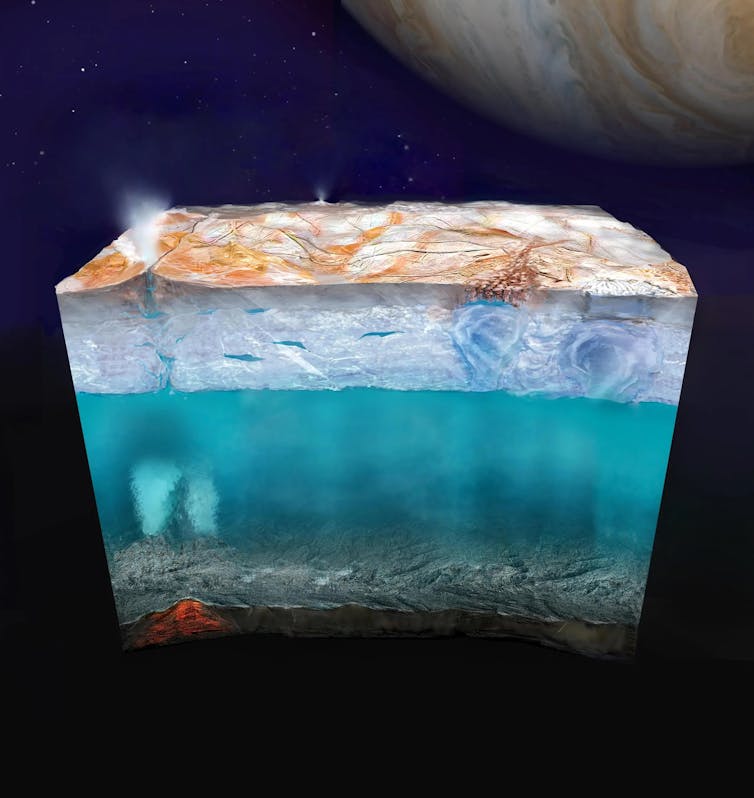Watch a video about Europa Clipper.
Our fall fund-raiser is going on now. Please help EarthSky keep going. Donate to EarthSky today!
Meet Europa Clipper
Europa Clipper is NASA’s mission to explore one of Jupiter’s four large Galilean satellites. Europa has an icy outer crust that covers an ocean world. It holds twice as much water as Earth. So, Scientists want to know more about the habitability of this large moon.
To get Europa Clipper from Earth to Jupiter in about 5 1/2 years, the trajectory has to take advantage of flybys in the solar system. Therefore, the mission must launch between October 10 and Nov 5, 2024, due to planetary alignments. The first date, October 10, became a no-go after Hurricane Milton appeared on the scene, threatening Florida. Here’s a list of the next launch opportunities for the mission.
If the launch goes as planned, Europa Clipper will arrive at Jupiter in April 2030.
Europa Clipper is NASA’s largest planetary exploration spacecraft yet. When the solar sails unfold, they’ll be 100 feet (30 meters) tall. At launch, the spacecraft will weigh as much as an African elephant.
What will the mission do?
Europa Clipper carries nine instruments. Some of the instruments will look down at the moon and record what it observes. While others will sample the environment the spacecraft passes through. The space around Europa is bathed with intense radiation from Jupiter. But this region may also have plumes of water erupting from under the moon’s icy crust.
To protect the spacecraft, Europa Clipper will be orbiting Jupiter and not the moon itself. The spacecraft will only dip into Europa’s environment during close flybys. The spacecraft will make 49 flybys, one every two to three weeks of its mission. Europa Clipper will get as close as 16 miles (25 km) from the moon’s surface.
NASA said:
The mission’s three main science objectives are to understand the nature of the ice shell and the ocean beneath it, along with the moon’s composition and geology. The mission’s detailed exploration of Europa will help scientists better understand the astrobiological potential for habitable worlds beyond our planet.
Could Europa be habitable?
Could life exist in the oceans of Europa under the layers of ice? That’s what scientists want to know. Plus, how is there liquid water under ice in such a cold place? James O’Donoghue of the University of Reading wrote for The Conversation:
The water in Europa’s ocean is kept liquid due to frictional heating. This heating occurs because Europa becomes stretched and then relaxed as it interacts with Jupiter’s gravity on its orbital path around the giant planet. For Europa’s ocean to be habitable, a steady supply of ingredients is needed to allow some form of chemosynthesis to take place.
If these ingredients exist, they could come from hydrothermal vents on Europa’s rocky seafloor, like those on Earth, or from material seeping down through the icy crust, the ‘sea ceiling’ if you like. We do not yet know if these mechanisms are plausible, so we need more data from many different angles.
There is growing evidence that plumes of material are escaping from Europa’s surface into space. If this material is from the ocean, measuring its composition would give us insights into the habitability of that ocean.

Bottom line: Europa Clipper is NASA’s mission to explore the icy, ocean moon of Jupiter. Scientists want to know if life could exist in Europa’s ocean.
Read more: A message to Europa from the people of Earth